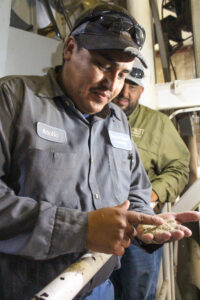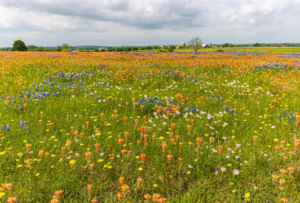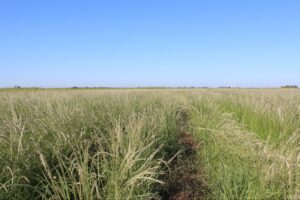To the untrained eye, the grasses delicately dancing in the wind across the prairies of the heartland may appear all the same, or a mixture of too many to name. However, there are actually four dominant species in the true tallgrass prairie: Little Bluestem, Big Bluestem, Indiangrass, and Switchgrass. These four grasses are usually found with a mixture of grasses too numerous to name. We’re kicking off a new series about these ecosystem pillars that we in the industry refer to as “The Big Four.”
The first on the list is Indiangrass—Latin name Sorghastrum nutans. Indiangrass is the state grass of Oklahoma. Best adapted to deep, moist soils, Indiangrass can also be found growing on a wide variety of soils. Indiangrass is a native, warm-season, perennial grass with a mature height ranging from 3 to 8 feet tall. The leaves are flat, up to 3/8 to 5/8 inch wide, 6 to 12 inches long, and the base of the leaf takes on the appearance of rabbit ears.
This excellent grazer tends to stand out to people because of its aqua-green color. The distinguishing hue of the grass lends itself to providing a pleasing aesthetic as an ornamental. In addition, Indiangrass is useful as a grazer for all classes of livestock. While Indiangrass is not usually a preferred grazer of deer, it will provide screening and fawning cover for deer, and nesting cover for quail and turkey.
While it’s versatile enough to thrive in a vast region—from New Mexico, Texas and Colorado up to Nebraska and out to the East Coast—there are particular varieties that do best within those areas. Bamert Seed offers Cheyenne and Lometa varieties of Indiangrass. Trust the experts at Bamert to help you meet your needs and project goals.



